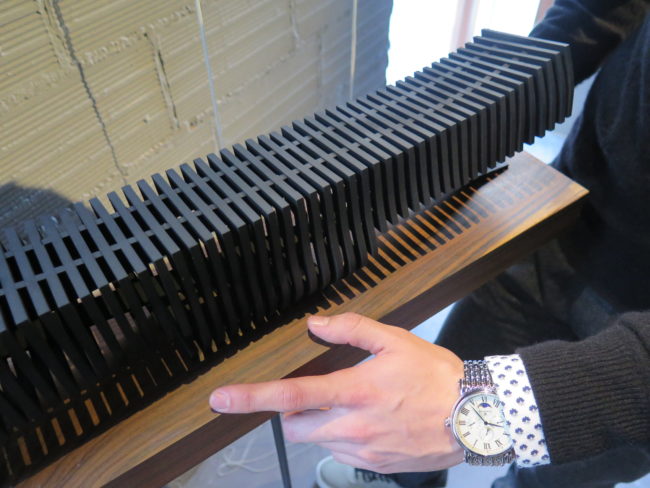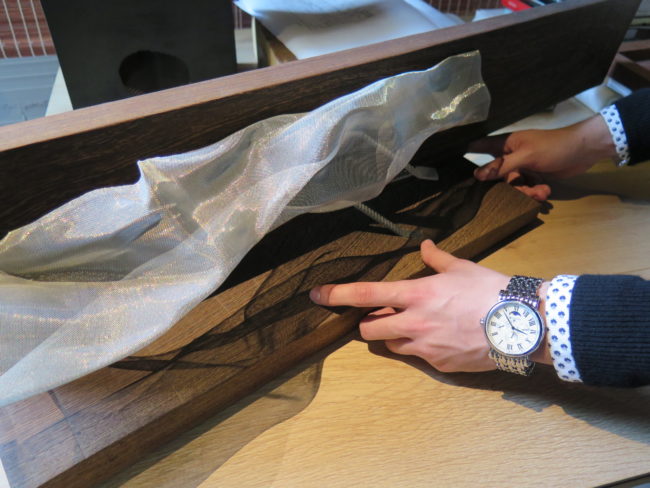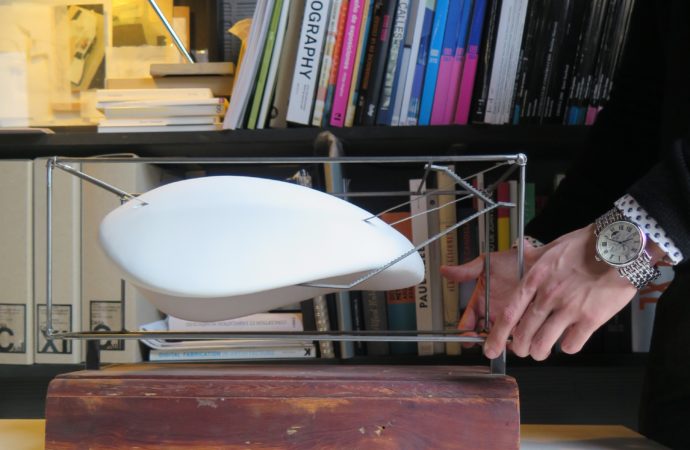Thomas Earnshaw is revered as a legend and pioneer in the field of Horology. Born in Manchester, England in 1749, he was celebrated for his work in refining, and improving upon the Marine Chronometers of the era, that were crucial to the journeys taken by the boats in the Royal Navy as they circled the globe during a golden era in English history of science and exploration. None more so than Chronometer no. 506, carried by HMS Beagle which carried Charles Darwin on his journey around the world to inspire his breakthrough study of evolution, On The Origin of Species. The chronometer is object 91 in the BBC Radio 4 series A History of the World in 100 Objects.

Art & Time. Artwork by My architect/Earnshaw watch, The Maskelyne Collection.
Earnshaw, following John Arnold‘s earlier work, further simplified the process of marine chronometer production, making them available to the general public. Earnshaw was introduced to Nevil Maskelyne, the Astronomer Royal, who tested an Earnshaw chronometer for six weeks and encouraged him to continue making them. As a result, he also embraced the challenge of developing clocks for use in Observatories –such as those in Greenwich and Armagh. It was highly praised by John Thomas Romney Robinson in the 19th century who at that time believed it to be the most accurate clock in the world. The Observatory also purchased Earnshaw’s second clock which was operated at sidereal rate with Edward Troughton’s Equatorial Telescope. It is this pioneering spirit to further the science of horology, coupled with a drive for excellence in craftsmanship that is at the heart of the Earnshaw timepiece which is available for the watch connoisseur and enthusiast alike.
Earnshaw history lives up to his legend: In July, 1791, Captain William Bligh purchased on behalf of the Admiralty Earnshaw’s chronometer no. 1503 for an expedition he was to command in HMS Providence to transport breadfruit plants from Tahiti to the West Indies. This was the second expedition that Bligh had undertaken with this mission. The first expedition was with HMS Bounty which had ended in the infamous mutiny led by Fletcher Christian and from which Bligh returned to England only with the greatest of difficulties. The second expedition, however, was entirely successful.

Art & Time. Artwork by My architect/Earnshaw watch, The Maskelyne Collection.
In 1805, Earnshaw and Arnold were granted awards by the Board of Longitude for their improvements to chronometers. The bimetallic compensation balance and the spring detent escapement in the forms designed by Earnshaw have been used essentially universally in marine chronometers since then, and for this reason he is generally regarded as one of the pioneers of chronometer development.
Nevil Maskelyne was the fifth British Astronomer Royal and the first person to scientifically measure the weight of the planet Earth. He also introduced several practical improvements, such as the measurement of time to tenths of a second.
The spectacular Thomas Earnshaw watch collection exudes old time elegance synonymous with the grandeur of a powerful position. A classic styling and beautifully rounded bezel frame a dial which is adorned with four subdial displays –three denote the day, date and month of the year and the last is a stunning moon phase dial.
Bold roman numerals form the border round the main dial and add to the classic styling of the collection, the theme of which is continued with the use of a genuine leather strap with signature stainless steel buckle, and simple crown. The Maskelyne Collection is a stunning series of classic timepieces from modern watchmakers Thomas Earnshaw which pays fitting tribute to one of the great thinkers in British maritime history.



No one has posted any comments yet. Be the first person!